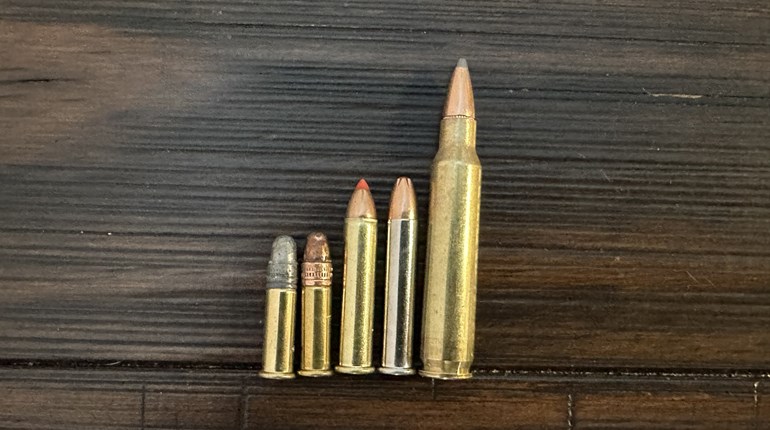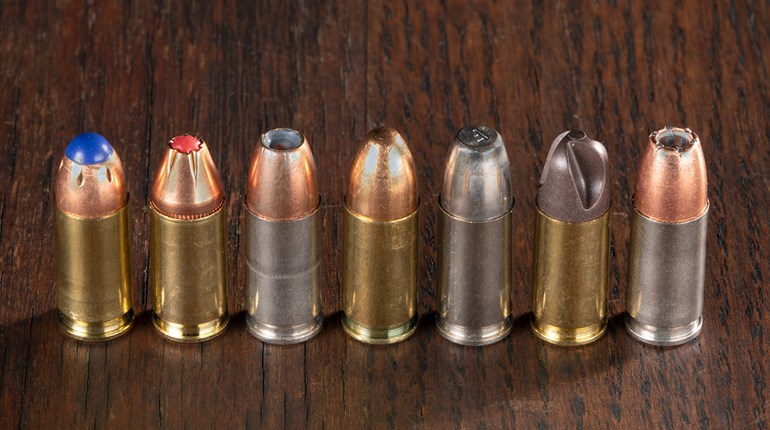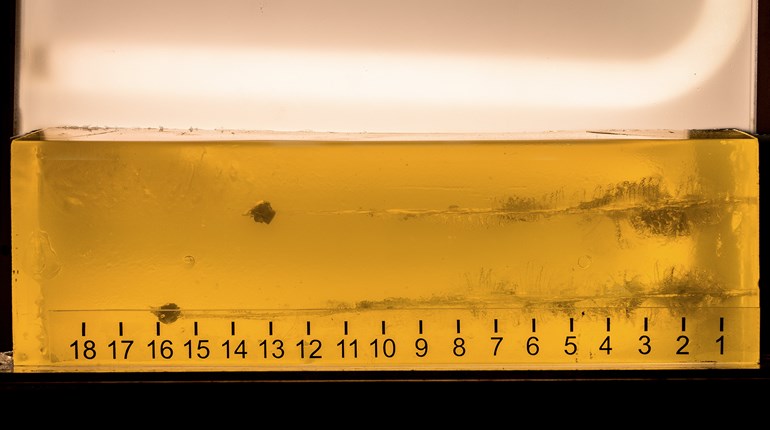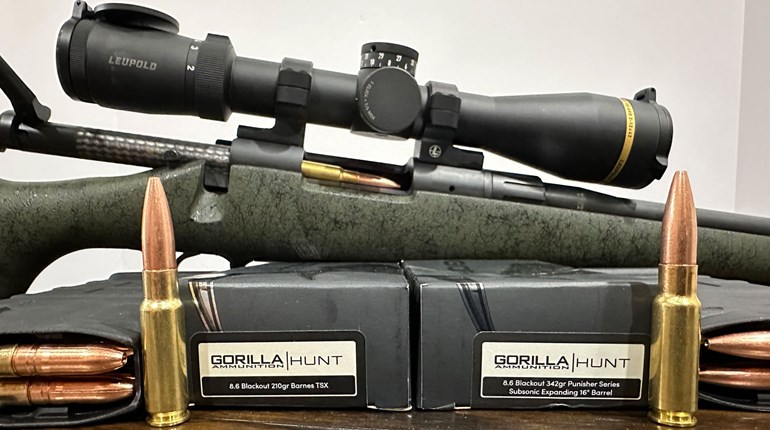
Bigger is better, they say, and before now that was the case when it comes to cartridges—see what I did there?—and bullets. These days, that sentiment isn’t true. For the naysayers who feel the need to shoot cartridges capable of holding powder weights in the triple digits, hear me out …
1. Ballistic Basics
It used to be, back in the day, big bore cartridges with large surface area or smaller bullets with large powder capacities were used with great success. But as our understanding of ballistics improved over the years, we’ve learned a thing or two about what makes for a good bullet; an aerodynamic, high-ballistic-coefficient (BC) bullet retains energy and velocity much better than bullets of old. What’s more, they don’t need a cartridge as big as the Titanic to push a bullet the size of a VW Bug, either, as these small new bullets function much better across a larger velocity spectrum. Just make sure the bullet is from a high-quality manufacturer.
2. Reduced Recoil
Sure, the massive magnums of last century put a hurtin’ on big game and bad guys alike. But we know what Newton’s Third Law says: For every action, there is an equal and opposite reaction. And while you’re not going to die from shooting a magnum, you’ll know you pulled the trigger on one. Yep, I’ll be the first to admit that it’s kind of cool to be able to say you shot such-and-such massive cartridge, but “cool” doesn’t always equal fun. By cutting down the bullet weight or powder charge by switching to a smaller cartridge, shooting can become not only more enjoyable, but more common (see the next point).
3. Acutely Accurate
They say practice makes perfect. And when it comes to firearms, there’s always an element of competition—even if you’re shooting by yourself—to reach a certain goal or level in shooting, most of which are tied to accuracy. But as discussed earlier, both recoil and poor shooting habits induced by recoil will cut into your marksmanship. Developing a flinch (pulling shots because of anticipation of recoil) is detrimental to accuracy and prevents you from reaching your full potential as a shooter. Furthermore, even if you don’t develop a flinch, you’ll be able to practice less due to soreness. And less practice means less proficiency. On top of that, the short actions that send these projectiles make them more rigid, and therefore more accurate since the action flexes less under pressure.
4. Barrel Burners
Not only do large cartridges wear out the shooter at a faster rate, but fast magnums wear out equipment faster, too. Every barrel has a lifespan, and more powder and faster speeds come at the cost of barrel life due to excessive heat and friction. This becomes more apparent with “overbore” cartridges, or those with more powder than can be efficiently burned to reach the same resulting bullet velocity.
Furthermore, you can pack all the powder in the world into a massive case, but that giant muzzle flash you see when it goes boom? That’s excess powder that did your projectile no favors. A little muzzle flash is to be expected just because of the nature of ammo, and while fireballs are another “cool” factor, it’s the gun equivalent of rolling coal in a diesel; it boils down to nothing more than a neat party trick, bro.
5. Economically Efficient
Ever wonder why certain cartridges are cheaper on your wallet than others? Whether you’re buying factory ammo or reloading, the cost of components will always be the biggest factor of cost when it comes to ammo. And believe you me, powder ain’t cheap! That said, it makes sense that a magnum, which needs more powder to function as intended, needs more powder—and therefore money—to operate at a given standard. If you’re a reloader, it pays at times to go cheap, meaning the smaller, more efficient cartridges will give you more bang for your buck in cost and the number of rounds you can reload with a given amount of powder.
6. Carrying Capacity
Another benefit of smaller rounds typically means higher capacity for the same magazine. Look at the .45 ACP vs. the 9mm, and now even the 9mm vs..30 Super Carry in the handgun market. AR aficionados will notice this in comparing rounds like the 5.56 NATO and the .458 SOCOM. For training, practice, long-range work … you name it, shooting is more fun than loading, especially when you’re paying a range for your time there.
7. Chambering Champions
Aside from increased magazine capacity, firearms can cycle shorter cartridges faster than cartridges with longer COALs. Let’s go to extremes for demonstrative purposes. A standard .223 Rem. round has a total length of 2.260 inches, while a .338 Remington Ultra Mag. measures 3.60 inches. Because the .223 Remington cartridge is roughly a full inch and a quarter shorter, the bolt must move about 40% less to chamber a new round, meaning it can cycle almost 40% faster. This is one reason smaller cartridges run so well in semi-autos.
8. Light Lead Launchers
One overall benefit of using smaller cartridges, both in length and height/width dimensions, is those cartridges fit in smaller guns. Look at something like an M4 that our soldiers carry now compared to the BARs our grandfathers and great-grandfathers carried in WWII, and our civilian equivalents, and you’ll notice a significant difference in both weight and size.
Why? Because when you shoot a smaller cartridge—in this case a 5.56 NATO compared to a .30-06 Springfield—all the parts can be scaled down in proportion to the cartridge. You don’t need a beefy bolt, as the barrel can be cut down to a shorter length and doesn’t need to be as thick in profile.







































